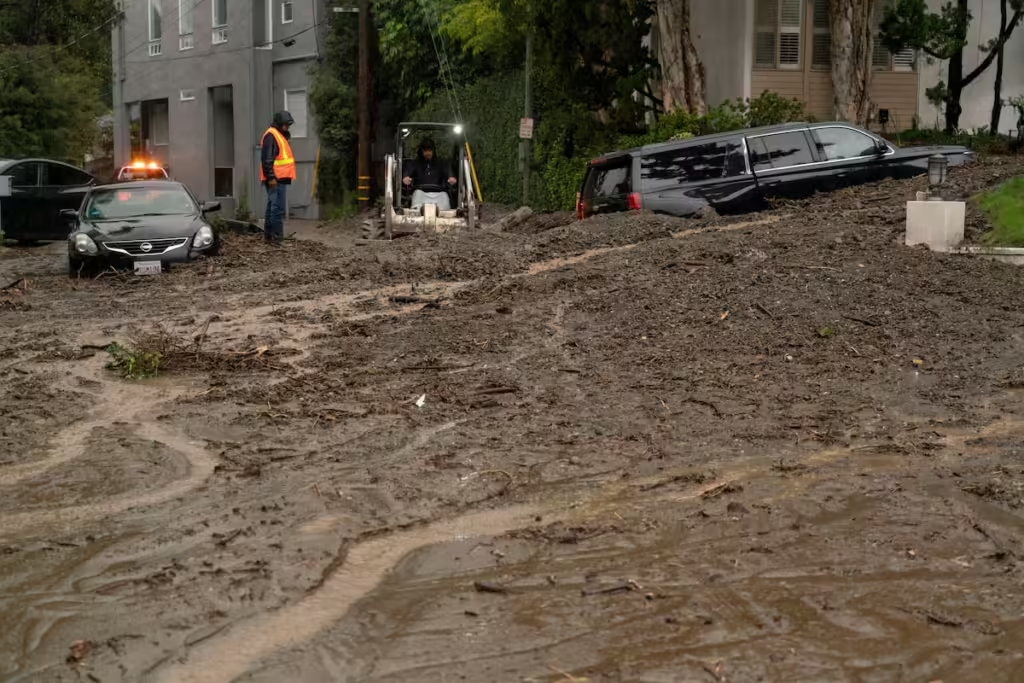Curiosity drives humanity to explore the world and seek answers to unanswered questions. One such topic that has captured the imagination of internet communities is the intriguing concept of the “Mud Flood.” The Mud Flood theory suggests that a global cataclysm covered entire cities under thick layers of mud, altering our history and obscuring forgotten civilizations. While not universally accepted in the mainstream, this theory has sparked widespread debate and curiosity. In this article, we’ll delve into what the theory is all about, why people believe in it, and what evidence is presented to support it. Let’s explore this fascinating, mysterious world together!
- What Is the Mud Flood Theory?
The Flood theory proposes that a massive cataclysmic event—or series of events—occurred in relatively recent history, engulfing entire civilizations under mud. Proponents argue that evidence for this can be found in architectural ruins, particularly in large, old buildings that seem to have buried basements or “half-buried” windows. These anomalies, they suggest, are signs of a forgotten historical event that rewrote the landscape and hid parts of ancient history from view.
Why the Name Flood”?

The term Flood” originates from the belief that a deluge of mud swept across continents, leaving cities and infrastructure submerged beneath layers of earth. The concept is somewhat related to more conventional flood theories, but with the added twist of the element of mud burying buildings, which gives the idea a more apocalyptic feel.
- The Origins of the Mud Flood Theory
The origins of the Mud Flood theory can be traced back to online forums, alternative history communities, and fringe research circles. While it gained popularity on platforms like YouTube and Reddit, the theory itself is built on a mixture of speculation, amateur research, and unconventional interpretations of historical evidence.
One of the catalysts for the theory was the examination of old photographs showing buildings with seemingly buried lower floors or windows at street level. These anomalies led some to question whether these structures had originally been designed that way, or if they had been partially buried due to some catastrophic event in the past.
Influences from Other Theories
The Mud Flood theory doesn’t exist in isolation. It borrows elements from other alternative history theories, such as the idea of “Tartaria,” a supposed lost civilization that some believe was wiped out during this event. Some Mud Flood theorists tie it to other historical phenomena, like Atlantis or the Great Flood from the Bible, suggesting that mud floods are a recurring cycle in Earth’s history.
- Evidence Presented by Mud Flood Believers
Supporters of the Mud Flood theory point to various types of evidence that they believe substantiate their claims. While these points are heavily debated, they form the foundation of the theory’s popularity:
A. Architectural Anomalies
Perhaps the most widely discussed evidence comes from architecture. Many buildings, particularly in Europe and parts of the United States, appear to have windows or doors that are at or below ground level. These buildings sometimes have basements that are partially filled with dirt or streets that seem too high compared to the original entrances. Mud Flood proponents argue that these architectural quirks are not simply due to construction techniques but rather are a sign of a past catastrophe that buried part of these structures.
B. Old Photographs and Maps
Photographs from the late 19th and early 20th centuries are frequently used to support the Mud Flood theory. In these images, some cities appear deserted, with few people or signs of life. Believers often claim that these images show cities in the aftermath of the Mud Flood event, when populations had either been wiped out or were in the process of rebuilding.
Old maps also play a significant role in the discussion. Some theorists argue that historical maps show significant inconsistencies, with entire regions or even civilizations, like Tartaria, that seem to have been erased from modern history. The idea is that these maps depict a pre-Mud Flood world.
C. Lack of Historical Documentation
Another point made by Mud Flood supporters is the lack of consistent documentation about certain historical periods. They argue that the silence in historical records, or sudden gaps in the archaeological timeline, points to a global cover-up of the Mud Flood event. Some go so far as to suggest that entire eras of history were either rewritten or erased to conceal the truth.
D. Unusual Geological Layers
Mud Flood proponents also point to geological evidence, such as layers of mud and sediment, which they claim are too thick to have naturally formed over such a short period. They argue that this could only be explained by a sudden cataclysmic event, such as a mud flood, rather than centuries of gradual accumulation.
- Criticism and Skepticism Surrounding the Mud Flood Theory
As with any unconventional theory, the Mud Flood hypothesis has attracted significant skepticism from the academic and scientific communities. Many historians, geologists, and archaeologists point to more mundane explanations for the evidence cited by Mud Flood proponents.
A. Architectural Explanations
Critics argue that many of the “buried” windows and doors are simply the result of architectural changes, such as the raising of street levels over time. In some cities, particularly those with long histories, streets were often built higher to combat flooding, improve drainage, or accommodate new construction. This would explain why some older buildings appear to be partially submerged.
B. Urban Development
Photographs showing deserted streets can often be explained by the long exposure times required for early photography. Because it took several minutes to capture an image, moving people and vehicles would not appear clearly, making cities seem emptier than they actually were.
C. Historical Gaps
The perceived gaps in historical documentation are more likely due to the natural limitations of record-keeping in pre-modern times. Wars, natural disasters, and other historical events can lead to the loss of records without necessitating a global conspiracy or forgotten disaster.
D. Natural Geological Processes
Geologists maintain that the layers of mud and sediment cited by Mud Flood proponents can be explained by normal, slow processes such as river sedimentation, landslides, or volcanic activity. Sudden events are not required to explain these formations.
- The Connection to Tartaria and Lost Civilizations
An interesting offshoot of the Mud Flood theory is the idea that the event wiped out a civilization known as Tartaria. Tartaria, according to some theorists, was a vast and advanced civilization that spanned much of Asia and Europe. They believe that Tartaria’s existence has been systematically erased from mainstream history, either as part of a deliberate cover-up or through the natural rewriting of history by later powers.


